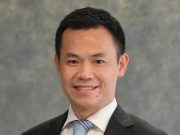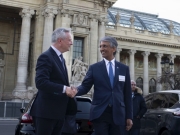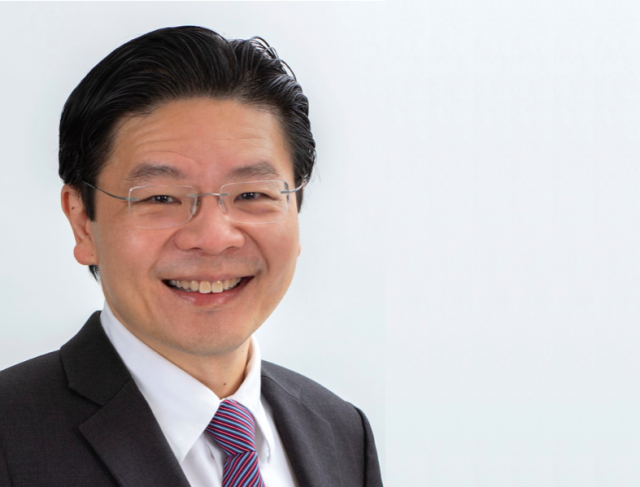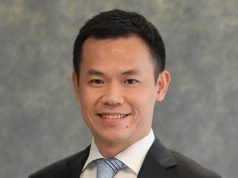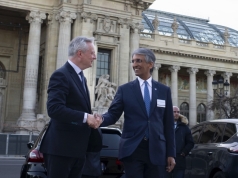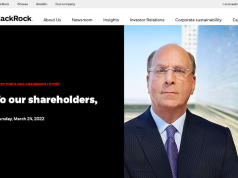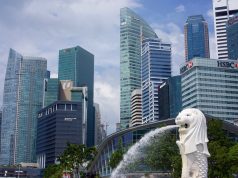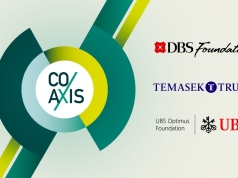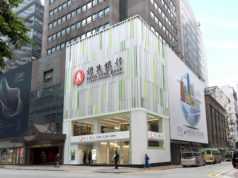Singapore Lawrence Wong Speech at Launch of the Sustainable & Green Finance Institute: Need for Global Cooperation on Climate Crisis, Asia Emits 50% of Global Greenhouse Gas, Decarbonisation Process is Expensive, Financial Sector Plays a Critical Role to Support Net-Zero Transition by 2050
20th April 2023 | Hong Kong
Singapore Deputy Prime Minister & Minister for Finance & Deputy Chairman of Monetary Authority of Singapore (MAS) Lawrence Wong had given a speech at the official launch of the Sustainable & Green Finance Institute (SGFIN) on the 20th April 2023 in Singapore, highlighting the need for global cooperation on climate crisis, tackle energy transition, Asia emitting 50% of global greenhouse gas, decarbonisation process is expensive, financial sector playing a critical role to support net-zero transition by 2050. See below for speech by Lawrence Wong at the Sustainable & Green Finance Institute (SGFIN) on the 20th April 2023 in Singapore.
“ Need for Global Cooperation on Climate Crisis, Asia Emits 50% of Global Greenhouse Gas, Decarbonisation Process is Expensive, Financial Sector Plays a Critical Role to Support Net-Zero Transition by 2050 “
Singapore Lawrence Wong Speech at Launch of the Sustainable & Green Finance Institute in Singapore
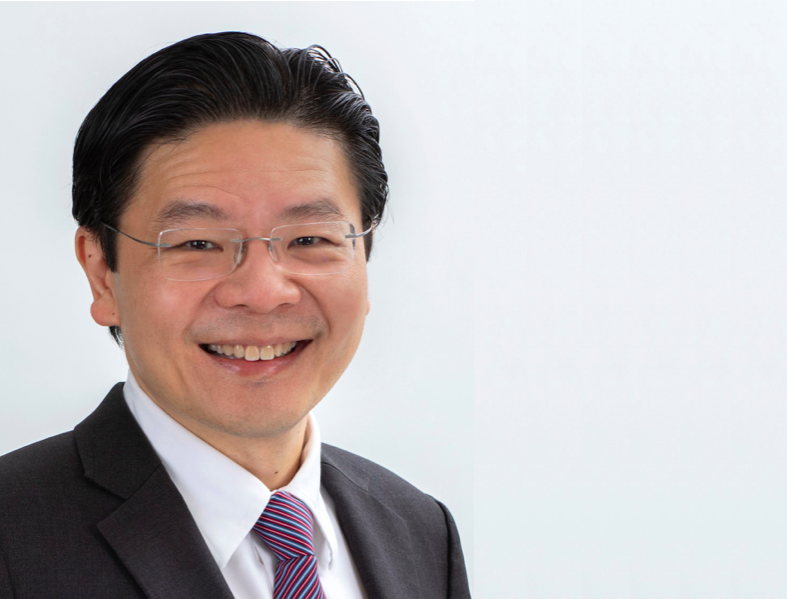
20th April 2023 – Speech by Mr Lawrence Wong, Deputy Prime Minister and Minister for Finance, and Deputy Chairman of MAS, at the Official Launch of the Sustainable and Green Finance Institute (SGFIN) on 20 April 2023
Mr Hsieh Fu Hua, Chairman, NUS Board of Trustees,
Professor Tan Eng Chye, President of NUS,
Professor Sumit Agarwal and the team at SGFIN,
Distinguished Guests,
Ladies and Gentlemen,
1. I am very happy to join you this morning for the official opening of the Sustainable and Green Finance Institute or SGFIN. So let me start by congratulating and extending my best wishes to Sumit and the team as you embark on this very exciting journey ahead. And I also want to thank all our industry partners and stakeholders for your support in this journey. Congratulations and thank you everyone.
2. In Parliament yesterday our Prime Minister spoke about multiple storms that we will have to brace ourselves for as we look ahead in the coming year. We’ve got the war in Ukraine. We’ve got superpowers’ rivalry, including in our part of the world. And we’ve got changes to the multilateral system. All huge challenges that we know we will have to confront. But there is one huge storm that is also looming ahead of us. It’s brewing over a much longer timeframe. But potentially its impact will be even more devastating. And that’s the climate crisis.
3. And we are all here because we care deeply about this climate emergency. It is getting worse, and we need to act faster. The IPCC report last month showed that we are now experiencing about 1.1°C of global warming. And this level of global warming has already impacted food and water security around the world and led to more fatal extreme heat events, as well as climate-related diseases. So the damage will only increase, as we approach, or worse, exceed the 1.5°C threshold. So we must take actions now, urgently, before it becomes too late.
4. In particular, we know that Asia is the key battleground in this war against climate change because Asia emits about half of global greenhouse gas emissions. Singapore itself is very small, because we are just tiny, we need to know our place in the world. But look at Asia, China, India, Southeast Asia, all the big countries around us. We in Asia collectively emit about half of global greenhouse gas emissions. But at the same time, millions of people in the region still do not have access to electricity, modern sanitation and drinking water. So it’s a big challenge because for them, it’s “I should have my chance to improve my living standard, so why ask me to cut back?”. So as the region develops, everyone will need more energy to meet the growing needs of their population. For now, most of this is being met through fossil fuels, including coal. So that’s why we will have to find a way to ensure an orderly and also a just energy transition in Asia.
5. It sounds straight-forward. The logic is clear, but it’s not such an easy thing to do because decarbonisation is expensive. A McKinsey study recently estimated that more than US$3 trillion a year is needed in Asia to achieve net zero by 2050. That’s a huge amount of money, US$3 trillion a year from now all the way to 2050. And this massive funding gap cannot be met by public finance alone. No government can afford to do so. And that’s why we need to strengthen public-private partnerships, and mobilise more capital from both public and private sources.
6. And that’s also why the financial sector plays such a critical role in the net-zero transition. We need more funding, not just for new green activities but for transition activities. That means channelling financing to decarbonise power generation, and other aspects of the economy – be it buildings or transport, because that is the only way the world and Asia can achieve net zero by 2050.
Finance to Catalyse Asia’s Net-Zero Transition
7. Singapore’s own emissions are small but as a major financial centre for the region, we will do our part. We will do everything we can to advance the development of green finance in Asia.
8. MAS had previously launched the Green Finance Action Plan (GFAP). We have reviewed and updated the strategies in light of recent developments. And today I am happy to share with you the refreshed “Finance for Net Zero Action Plan”, or we call this the FiNZ Action Plan in short. This builds on the earlier GFAP and sets out our plans to expand our focus from pure Green finance to include Transition finance. But the goal remains the same: which is to catalyse Asia’s Net-Zero Transition.
9. So let me briefly outline what we intend to achieve through this FiNZ Action Plan.
10. First, we will continue to strengthen the fundamental building blocks of the 3Ds – data, definitions, and disclosures, issues that both Professor Sumit and Professor Tan highlighted earlier, because these are foundational building blocs for us to do anything.
a. All of you know why these 3Ds are so important. We need to make climate and sustainability data more reliable and more comparable, so that financial market participants can better assess their exposure to ESG risks and opportunities. And having good data, good definitions, good disclosures will also address greenwashing concerns through greater transparency.
b. MAS had already issued guidelines for disclosure and reporting of ESG retail funds last year. We will deepen its efforts to improve market confidence in the use of such ESG labels and ratings.
c. One example is a code of conduct which is being jointly developed by MAS and the industry. This will require ESG ratings and data product providers to disclose how transition risks are factored into their products. We will conduct a public consultation on this code in the second half of the year.
d. We also need clearer definitions on what activities are considered green, brown, or transition. Green and brown are easy, not so contentious. People all know what is green, which they want to do more of; and what is brown, which they want to do less of. Everything that is in between is the most contentious part. But it’s also the most important because no amount of new green projects will get us to net zero. We need to resolve everything that’s existing today, and especially in Asia where 60% of electricity is generated by coal plants. So how do we bring about a more orderly and responsible phasing out of coal plants in Asia, while safeguarding the lives and livelihoods of people in this region. That’s the big challenge. The Green Finance Industry Taskforce has led the development of a taxonomy to classify activities according to a “traffic light” system. We will strengthen the credibility and interoperability of taxonomies across jurisdictions, to provide greater clarity to financial institutions to drive cross-border green and transition financing flows.
e. Climate disclosures by corporates is another important building block because this allows firms and investors to better understand climate risks, and to make long-term investment and business plans.
f. The International Sustainability Standards Board (ISSB) has been working on a global baseline standard of sustainability disclosures, which they are finalising around the middle of this year. Where Singapore is concerned, MAS will work with SGX and other agencies on a roadmap for key financial institutions and listed companies to make climate disclosures aligned with the ISSB standards. I know that disclosures are something that many listed companies are concerned about. It’s an additional obligation on them. So hopefully with the roadmap you will have clearer milestones of what to expect in the years to come. And we will also help you build your capabilities in sustainability reporting.
11. Second, we will redouble our efforts to forge a climate-resilient financial sector.
a. MAS will engage financial institutions to build sound climate and environmental risk management practices. We will strengthen industry adoption of the Environmental Risk Management Guidelines, building on emerging and good industry practices globally.
b. We will step up engagements with financial institutions to deepen capabilities in climate scenario analysis. This will help us better understand the implications of climate change for financial institutions and our financial system.
c. We will also review how financial institutions are responding to the risks posed by climate change and the transition to a low-carbon future, and ensure that they put in place sound governance and risk management measures to address these risks. In other words, MAS’ supervisory approach will look at climate risk and will incorporate evolving international best practices in this space.
12. Third, we will promote the adoption of credible transition plans by our financial institutions based here in Singapore. More of them are adopting net zero goals for themselves. Singapore has a net zero plan to get to net zero by 2050. Organisations within Singapore also ought to start thinking about how to get to net zero for themselves. And more financial institutions are doing so, and backing these up with robust transition plans. This is a new and very important area of work.
a. A good net-zero transition plan looks beyond the financial institution’s own risk profile, to also articulate how it can support the decarbonisation in the broader economy. Because after all, a financial institution has links, loans and all sorts of financing flows with many other stakeholders in the economy.
b. So through this process, financial institutions can themselves be effective agents of change. They can engage their clients, and help set expectations for businesses to embed decarbonisation into their strategies.
c. To do this, financial institutions can take reference from sectoral decarbonisation pathways when they set emissions reduction targets, and when they engage with their clients on the actions to decarbonise their businesses. MAS is also engaging international experts like the International Energy Agency to support the development of regional sectoral decarbonisation pathways that suit Asia’s circumstances and needs. In carrying out this work, MAS will work with, and learn from, international bodies like GFANZ and the OECD, and from early-adopter financial institutions that have already started on their transition planning journeys.
13. Fourth, we aim to facilitate financial innovation and catalyse credible green and transition solutions and markets.
a. MAS’ existing grant schemes for sustainable bonds and loans have already helped to spur significant growth in sustainable debt that is issued out of Singapore. Based on estimates, Singapore accounts now for more than half of the cumulative issuances in ASEAN1. Last year more than S$30 billion worth of sustainable debt was issued.
b. So building on this progress, we will set aside a total of S$15 million to enhance and extend the sustainable bond and loan grant schemes for a further 5 years, till 2028.
i. The scope of the grant schemes will also be expanded to support transition bonds and loans. Because as I mentioned just now, these transition instruments are going to be important, and they will focus on supporting “brown” companies to transition to become green. And I think that can have a greater impact on climate transition than just issuing green bonds and loans alone.
ii. Today transition bonds form a very small segment of the sustainable bond market. So we hope our incentives will support the growth of the transition instruments market in Singapore.
iii. Of course, we will put in place safeguards to mitigate the risk of “transition-washing”. So it’s not just greenwashing, transition-washing is also a risk. We will put in place safeguards to mitigate this risk and the misuse of proceeds. To qualify for the grants, all transition instruments must be aligned with internationally recognised taxonomy and transition finance principles,and be accompanied by the disclosure of an entity-level transition plan.
iv. We hope these moves will ensure that sustainable debt issued out of Singapore will continue to be held to high standards, and the growth of our green and transition finance market can be achieved in a credible manner.
c. MAS has also been developing Singapore as a centre for climate risk financing instruments, including catastrophe bonds. These enable the insurance industry to raise additional financing for protection against disaster risks. MAS’ Insurance Linked Securities (ILS) Grant Scheme has already supported the issuance of 23 catastrophe bonds in Singapore. We will also extend the ILS Grant Scheme for three more years, till end-2025, to defray the costs of issuing catastrophe bonds that focus on Asia’s risks. And we will also support the ILS grant scheme, beyond catastrophe bonds, to support other forms of ILS, like sidecars and collateralised reinsurance arrangements.
d. Another area that we are working on is blended finance. Blended finance can play an important part in closing the financing gap I spoke of earlier. Because this is where catalytic or concessional capital, be in from public and philanthropic sources, can improve project bankability and crowd in more private capital. We have started some blended finance projects and we are seeing some promising early results. For example:
i. Clifford Capital, whose borrowings are guaranteed by the Singapore Government, provides financing to crowd in commercial investments for infrastructure projects.
ii. Bayfront Infrastructure Management (or BIM), which also has support from the Singapore Government, mobilises capital from institutional investors, by acquiring infrastructure bonds and loans from banks, repackaging these into notes, and selling them to investors.
e. The challenge is to scale blended finance for green and transition projects further, well beyond what we are already doing today, and MAS is closely studying how we can achieve this.
Building Capabilities and Platforms
14. I’ve given a broad overview of what we hope to achieve through FiNZ Action Plan. We are taking major steps to mobilise green and transition financing. But for all of these efforts to bear fruit, we will also need to build on several key enablers.
15. One such enabler is to have more vibrant markets and platforms for green and transition financing. And that’s why we are working to support the development of carbon services and carbon credit markets in Singapore, and are exploring the carbon credits’ applications.
16. We are also looking to leverage on Green FinTech solutions. Good news is that we are seeing more green start-ups in the FinTech space. When we talk about FinTech, everyone thinks about blockchain, distributed ledgers, Web 3.0, applications in payments and capital markets, but FinTech is much more than that. Yes, in these areas, FinTech has already made financial services more efficient and innovative. But Green FinTech can play a role to promote new green financial solutions, especially for under-served market segments, like SMEs.
17. Last year, MAS and SGX piloted “ESGenome” under Project Greenprint. This is a digital reporting tool which allows SGX-listed companies to easily disclose their sustainability information. We will continue to advance Project Greenprint to strengthen the collection of, and access to, sustainability data. For example, MAS and several government agencies are working with SGX to pilot the use of ESGenome to support our SMEs in voluntary sustainability reporting.
18. Crucially, we will also invest in the skills and capabilities of our people and organisations.
a. We need robust research to advance the development of green and transition finance, and to support our businesses in formulating new green products and solutions. This is why MAS has helped to set up three Centres of Excellence, including SGFIN. Our Centres of Excellence have been producing quality research, such as SGFIN’s research on a Sustainability Impact Measurement and Assessment Framework for corporates in Singapore and Asia.
b. But ultimately, the most important ingredient for us to become a successful hub for Green and Transition Finance – and it all comes down to this – is people and talent. We need people with the right capabilities and skillsets – not just skillsets in finance and financial expertise, but also other inter-disciplinary skills like environmental science, and climate risk.
c. In fact, there is already strong demand for such skillsets today because sustainable finance is one of the fastest growing areas of finance in our market. Our banks and other financial institutions are looking to expand their operations in green and transition finance, they are looking to build up capabilities, and they are looking for more specialists and talent in this space. So we will work with our Institutes of Higher Learning to develop our talent pipeline so that more people can seize these growing opportunities. I am glad to hear just now from Sumit that the inaugural batch of NUS and SGFIN students from the Master of Science programme in Sustainable and Green Finance, who are here, will soon be graduating. To all our students, congratulations in advance. Given the huge demand, you will have jobs waiting for you, I’m sure. We look forward to many more graduates from NUS and other Institutes of Higher Learnings entering the job market, equipped with the relevant competencies and skillsets.
d. But we cannot just tap on new entrants to the workforce alone. That will be too slow. If we are just going every year new cohort coming to the workforce, it will take too long. We have to work on the existing workforce to reskill and upskill those who are already in the financial services sector. And that’s why MAS is also partnering the Institute of Banking and Finance (IBF) to develop the Jobs Transformation Map for Sustainable Finance. Through this Roadmap, we hope to deepen our understanding of how the climate transition will shape future job trends, job responsibilities, what new skillsets are required, how many new jobs will be created, and guide our initiatives to reskill and upskill our existing workforce.
Conclusion
19. Overall, we have ambitious goals for the Finance for Net Zero Action Plan. But the challenges we face are complex, and the situation is dynamic and fluid. So our plans cannot be static. We will continue to monitor global developments closely, consider how they apply to Singapore, and adjust our strategies where necessary.
20. We have to move quickly to decarbonise the economy, not just here in Singapore, but throughout the entire region. The scale of this transition is massive, and there are no easy answers or silver bullets. But if we apply the collective knowledge and resources of our partners in the financial sector and beyond, we will be able to tackle the challenges ahead, and also benefit from the growing new opportunities in the green economy. So together, let’s work to realise our vision to catalyse Asia’s Net-Zero Transition.
21. Thank you very much.
Sign Up / Register
Caproasia Users
- Manage $20 million to $3 billion of assets
- Invest $3 million to $300 million
- Advise institutions, billionaires, UHNWs & HNWs
Caproasia Platforms | 11,000 Investors & Advisors
- Caproasia.com
- Caproasia Access
- Caproasia Events
- The Financial Centre | Find Services
- Membership
- Family Office Circle
- Professional Investor Circle
- Investor Relations Network
Monthly Roundtable & Networking
Family Office Programs
The 2024 Investment Day
- March 2024 - Hong Kong
- March 2024 - Singapore
- June 2024 - Hong Kong
- June 2024 - Singapore
- Sept 2024 - Hong Kong
- Sept 2024 - Singapore
- Visit: The Investment Day | Register: Click here
Caproasia Summits
- The Investment Summit
- The Private Wealth Summit
- The Family Office Summit
- The CEO & Entrepreneur Summit
- The Capital Markets Summit
- The ESG / Sustainable Investment Summit




